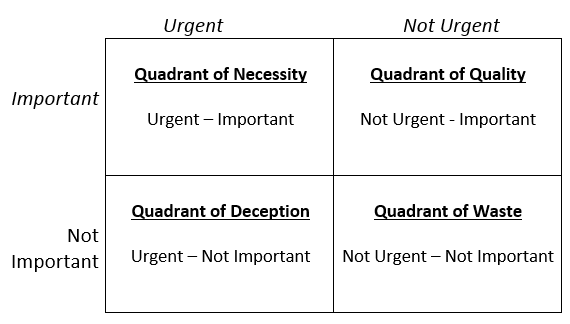
Setting limits will help you to achieve your goals.
We live in a society that scoffs at setting limits. You often hear phrases like the following:
- The sky’s the limit.
- Aim to have it all.
- Don’t limit yourself.
 I would argue that you should definitely dream big and examine any subconscious limits that may be holding you back. However, an important step in achieving your goals and turning your dreams into reality is to set carefully chosen limits. After all, limits help to define, give shape, and add substance to your dreams. During the past few years I’ve set several limits for myself that have been of great use in helping me to achieve my goals. I’m going to share nine of them with you so that you can consider applying these limits in your own life.
I would argue that you should definitely dream big and examine any subconscious limits that may be holding you back. However, an important step in achieving your goals and turning your dreams into reality is to set carefully chosen limits. After all, limits help to define, give shape, and add substance to your dreams. During the past few years I’ve set several limits for myself that have been of great use in helping me to achieve my goals. I’m going to share nine of them with you so that you can consider applying these limits in your own life.
Below you’ll find 9 limits that will drastically improve your quality of life.
1. Limit the Amount of Food You Eat.
We all have strengths and weaknesses. One of my strengths is that I’m very consistent when it comes to exercising. I’ve shared on this blog that I’m a runner and a weightlifter. I carry out both of these activities on a regular basis and seldom miss one of my workout sessions.
One of my weaknesses is food. I love eating. You may have heard that you can’t outrun food, and I can attest to the truth of this statement. A while back I was in great shape because of all the exercise I was getting, but I also weighed more than I should because I was overeating.
For me, the solution to the problem of overeating was portion control. That is, to limit the amount of food that I was ingesting.
There are many ways to do this. One way is to simply use the size of your hand to gauge portion sizes. For example, one serving of protein is the size of the palm of your hand. In addition, women should have one serving of protein with each meal, while men should have two.
I use containers that come in different sizes and colors for proteins, fruits, vegetables, carbohydrates, fats, and seeds and dressings. This blog post explains how many containers of food to eat each day.
A third option is to limit your portions by using smaller plates. However you decide to do it, limiting your food intake will help you to lose weight, be healthier, and live longer.
2. Limit Your Yearly Goals
In my post, The Garden as A Metaphor For Life – 10 Life Lessons From Gardening, I explain how you need to prioritize when it comes time to decide what to plant in your garden.
After all, you can’t possibly grow pumpkins, watermelons, cucumbers, lavender, roses, tomatoes, sweet peppers, spinach, snow peas, red cabbage, chrysanthemums, pansies, hydrangeas, and so on, all at the same time.
In much the same way, you can’t achieve all of your life goals at once. Instead, you need to choose a few life goals to work on each year. That is, limit your New Years’ Resolutions, or yearly goals, to 5 or 7.
If you try to work on too many goals at the same time, you won’t be able to give any of them the time, energy, and attention that they need. This means that you won’t make any real progress on any of them.
Look at the two situations below:
- Ann sets 10 goals at the start of the year and spends the next 12 months trying to move all of them forward. They’re ambitious goals, ranging from learning French to writing a novel. By the 31st of December she’s made a little progress with each goal, but she hasn’t succeeded in achieving any of them.
- Billy sets 5 goals at the start of the year: to spend more time with his family; to start a blog; to lose 15 pounds; to travel with his family to Spain for summer vacation; and to run a 10K. By the end of the year he’s accomplished all of them.
By limiting the number of goals that you work on in any given year, you’ll make it much more likely that you’ll be able to achieve your goals.
3. Limit Yourself to One Important Thing for the Day
For each day you should identify one important thing that you’re going to achieve that day. That is, your highest priority for the day. It could be something like the following:
- Write a 1500-word blog post;
- Create a 10-minute video;
- Prepare the slides for the presentation for the Board of Directors;
- Learn to conjugate French “er” verbs in the present tense; and so on.
Try to get your most important thing done first thing in the morning—start each day by eating a live frog. That way, even if your plans for the rest of the day go astray, at least you’ll have gotten the most important thing done. Imagine a whole year in which you got one high priority item done each day!
4. Limit Your To-Do List to Important Tasks
We’re all familiar with Stephen Covey’s time management matrix. The matrix uses four different quadrants to help you determine the priority of a task. In turn, the four quadrants are organized by importance and urgency. Here’s the matrix:

As you can see, the items in the top two quadrants are important, while the items in the bottom two quadrants are not. You should try to limit the tasks that you include in your to-do list for each day to those that fall into one of the top two quadrants.
Avoid tasks that fall into the Quadrant of Deception, and eliminate the tasks that fall into the Quadrant of Waste.
5. Limit the Amount of Time You Allot to Each Task
Once you have your to-do list ready for the day, calculate the amount of time that you’re going to need to complete each task.
Then, when you’re working on the task, make sure that you don’t exceed the time that you’ve set aside for it. After all, as the famous Parkinson’s Law states, work expands to fit the amount of time that is allotted to it.
This limit will do two things for you:
- It will help you to focus on the task at hand since you know it has to be completed within a specific time frame.
- It helps you to deal with perfectionism. Your goal isn’t to produce something perfect, but to do the best that you can within the time that you have available.
6. Limit the Items You Add to Your Schedule
When you’ve assigned a time limit to each task on your to-do list, add the tasks to your schedule. That way, you’ll know when to work on what task.
As an added benefit, having a full schedule will help you to limit your to-do list. After all, if a new task comes in during the day—unless it’s something really urgent—you’ll have to set it aside to be done on another day because your schedule is already full.
7. Limit Yourself to Working on the Task at Hand
There are some instances in which you can multitask. For example, you can listen to an audiotape while you go for a run, you can cook dinner while you do the laundry (which is what I’m going to do as soon as I finish this blog post), or you can answer the phone while responding to a run-of-the-mill email.
However, for tasks that require deep, uninterrupted thought, you need to unitask. That is, you need to limit yourself to working on the task at hand to the exclusion of everything else.
8. Limit Your Work Hours
Limit the amount of time that you spend working. There’s a correlation between working hours and output. With higher work hours, labor output falls. Knowing that there’s a cap on your work hours will make you more productive and it will help you to stave off procrastination.
In addition, working too many hours has been linked to all of the following:
- Fatigue
- Depression
- Relationship problems
- Health risks
- Weight gain
While a lot of people think that the more that you work the more you’ll be able to get done—I used to be one of those people—this is simply not the case. To do more, limit the number of hours that you work.
9. Limit Your Belongings
A few years back I considered renting a storage unit. Then, thankfully, I came to my senses and started decluttering instead. One way to limit your belongings is to choose a specific quantity that you’re going to limit yourself to for each category of items that you own.
For example, I only allow myself to own one perfume at a time. I choose the perfume that I’m going to buy very carefully, and then I stick to it until the bottle is empty. At that point I decide whether to try a different perfume or buy another bottle of the same one.
The only category of items I haven’t been able to stick to a limit for is books. 🙂
Conclusion
In order to achieve your goals, set limits. You can get started by setting the 9 limits I’ve explained above. Live your best life by setting limits.





Related Posts:
- 13 Quick Ways to Improve Your Mood
- Three Effective Methods For Making Better Decisions
- 10 Things to Do When life Throws You a Curveball
- 21 Ways to Create and Maintain a Positive Attitude
Did you enjoy this article? Subscribe to “Daring to Live Fully” by clicking here and get free updates.




 Marelisa Fabrega is a lawyer and entrepreneur. She holds a Bachelor of Science in Business Administration from Georgetown University in Washington, D.C., as well as a Juris Doctor from the Georgetown University Law Center. You can learn more about her
Marelisa Fabrega is a lawyer and entrepreneur. She holds a Bachelor of Science in Business Administration from Georgetown University in Washington, D.C., as well as a Juris Doctor from the Georgetown University Law Center. You can learn more about her 





